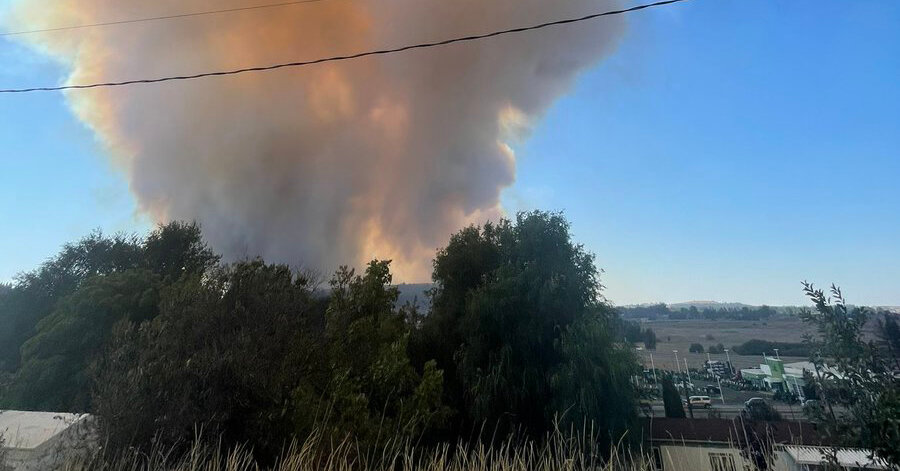In a Heat Wave, the A.C. Repairman Is the Most Popular Guy in Town
José Guerrero’s phone buzzes from morning to midnight with sweaty pleas for help: The air-conditioner fan just quit. My grandma is stuck in a 90-degree house. My children are overheating. Please come, it’s so hot.
As Phoenix slogs through a record 20 straight days of 110-degree or higher temperatures, Mr. Guerrero, 33, has emerged as maybe the most essential worker in a town desperate to stay cool: the A.C. repair guy.
“We live in a city where you have to have it,” he said. “If they need us, we go.”
Summer is always his busy season, but air-conditioner service companies around the Southwest are seeing voracious demand — a result of record-breaking temperatures searing the country from Florida to California, compounded by a shortage of skilled technicians and equipment.
So now, Mr. Guerrero, his two brothers and their father roll out seven days a week, heading for suffocating attics and tar-shingled rooftops across the Valley of the Sun to coax ailing air-conditioners back to life. They fix leaking refrigerant lines, replace burned-out capacitors and try to lower Phoenix’s temperature a few degrees.
But keeping the city cool is sweltering work. They endure the heat by guzzling water and wrapping wet cloths around their necks, and try to avoid burning their hands on scalding sheet metal or fainting inside crawl spaces where they say temperatures can soar to 150 degrees.
“We call it going to sleep,” José Guerrero said. “It’s bad up there.”
The men use thermometers to gauge temperatures inside houses and around the machinery, which often soar well past the outdoor air. “163 degrees in the attic,” Edi Guerrero, 30, another brother, reported after coming home drenched in sweat one afternoon.
Most white-collar workers around Phoenix have hunkered inside their air-conditioned homes or icy offices.
But about 20 percent of Arizona’s workers spend their days outside, according to an analysis by the Union of Concerned Scientists, harvesting crops and powering Arizona’s growth by building new roads, semiconductor factories and condos.
The state legislature has rejected efforts to write heat protections into law, but this week, Gov. Katie Hobbs said her administration would send inspectors to check whether workers have access to adequate water, shade and rest in the extreme heat.
On Saturday, the youngest Guerrero brother, Alex, 22, spent the 116-degree afternoon checking air-conditioners at an apartment complex when he felt his breath quicken and his eyes droop. He asked his girlfriend to drive him home, and when he staggered inside, he called out for his mother. and collapsed.
“Next thing I knew, I was on the ground,” he said.
The family called 911 and as they waited for paramedics to arrive, they knew from experience to cool him down with wet cloths and gave him sips of a sports drink. A half-hour later, he sat shirtless inside the family’s mobile home, shaky but recovering: “It was just too damn hot.”
The Guerreros never planned for air-conditioning to become the family industry.
Roberto Guerrero, 51, who immigrated from Chihuahua, Mexico, to Phoenix 30 years ago, said it was a second career after a sudden illness in 2008 left him paralyzed. During an agonizing three-year recovery, as he learned to walk and pick up spoons again, the family’s savings were drained, and they were evicted.
“I needed to do something,” Mr. Guerrero said.
He initially tried to sell air-conditioning units, but said he realized that while few people wanted to buy, everyone needed repairs.
José said he joined his father after losing his corporate job with a delivery app during the pandemic. The elder Mr. Guerrero still walks with a slight limp, so climbing to the roof, where most residential air-conditioners sit, are treacherous even with the security of a strong rope.
The parents, siblings and three of José’s children live together in a drafty mobile home at the Sun ‘n Sand trailer park on the edge of an interstate in northwest Phoenix. They eat homemade enchiladas and watch television crammed around a kitchen table, talking over the day’s jobs and joking about who wilts fastest in the heat.
They own their mobile home, but José and Roberto say they dream about buying some land way west of Phoenix, where they can raise chickens and horses and plant fruit trees, like their relatives in Chihuahua.
They are weary of patching up the mobile home, and are still fixing a flimsy roof that peeled off in a windstorm months ago. They recently replaced their wheezing old window A.C. unit with a new wall-mounted one.
And living in the country, José said, might give him an excuse to ignore the service calls pinging his phone on weekends.
Sometimes, the Guerreros worry they are not charging enough. Repairs can run from $500 for a relatively simple fix, to $10,000 for a new unit, and most of their customers cannot afford nearly that much.
They say they end up knocking hundreds of dollars off repair bills for struggling customers, taking fruit or homemade food instead. The other day, a client whose house hit more than 100 degrees slipped $100 into Jose’s hand, and asked him to do what he could. When another customer could not afford the labor costs of installing an electric part, José said he offered to walk him through it on FaceTime.
“It’s the reason we’re poor, but we’re happy,” the elder Mr. Guerrero said.
On a pre-dawn Tuesday morning, it was already 93 degrees when José and his father pulled up to a home in a working-class neighborhood in the Phoenix suburb of Mesa.
The customer, Nestor Flores, a roofer, had called the Guerreros when his June electric bill hit $570. His leaky rooftop air-conditioning unit had been running constantly at full speed while only burping out tepid air, making the house so swampy that his three children had started spending summer days with their grandparents. He said José had charged him thousands less than other repair companies.
“He’s cutting me a break,” Mr. Flores said.
José was already sweating through his work shirt as he clambered up a ladder, steadied by his father, and onto the roof spangled with bird poop. He pulled out a drill and undid the bolts holding the 500-pound unit in place.
He had to work fast. Other calls were coming in, and the temperature had just zoomed above 100. In an hour, the roof would be a skillet.
Later that afternoon, Phoenix officially broke its record for the longest stretch ever of 110-degree days. It was big news for weather geeks and news outlets across the region, and for the Guerreros, a reminder of even more miserable weeks ahead.
“We’ve been here all our lives,” José said. “You don’t get used to it.”


